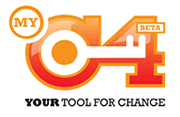What is Lendahand about?
Lendahand is a Netherlands-based online lending platform with the objective to stimulate employment in emerging countries. Small and Medium Enterprises (SMEs) in these countries do not have proper access to financing as they are too small for banks and too large and complex for microfinance institutions. Hence they are not able to grow and percentage-wise only provide half of the jobs that SMEs in developed countries deliver. Financing the ‘missing middle’ leads to significant social impact while leaving room for a solid financial return. On our platform individuals can unlock this potential by choosing promising SMEs to lend to. We call this meso-credit.
What are the three main advantages for investors?
We’ve asked each and every new investor what they like about Lendahand and the three advantages that stand out are:
- You know exactly how your money is used (in control)
- You get a fair interest rate of 3-4% per annum (financial return)
- You help creating jobs in poor countries (social return)
What are the three main advantages for borrowers?
One of my colleagues went to the Philippines where Lendahand’s first local partner is based and interviewed 15 borrowers. Key takeaways:
- For some of the companies, the only alternative are so-called ‘Bombays’. These are men (usually from Indian descent, hence the name) that provide 1-month loans without credit checks. The interest rate is around 20% per month. Lendahand together with its local partner provides loans with interest rates that are closer to what banks are charging
- Most of the companies are not eligible for bank loans because they’re too small. If they are able to get a bank loan then they need to go through a process that takes a couple of months before they actually get the money. These companies need funds quickly (e.g. a large order comes in) and can’t wait that long. At Lendahand’s local partners they get the funds within weeks if not days
- Lendahand has set up a foundation that provides non-financial support to SMEs in the form of demand-based training. The funds come from NGOs that donate to the foundation. We’ve held three training sessions so far with a total attendance of 117 SME owners. Once Lendahand is profitable it will donate at least 10% of its earnings to the foundation
 Lendahand cooperates with MFIs. Which criteria do you use when choosing the MFIs you work with?
Lendahand cooperates with MFIs. Which criteria do you use when choosing the MFIs you work with?
Lendahand carefully selects its local partners by going through a rigorous due diligence process where it assesses, amongst others, the financial position, portfolio quality, and governance. Typically a local partner has a loan portfolio of more than €5mio, a write-off ratio smaller than 2% and equity capital of at least 10% of the total assets. Although the local partners are for-profit organizations, it is a necessary condition that they have a social mindset and intend to offer competitive interest rates to their clients and screen them for environmental and social impact. The local partners take the full credit risk to the SMEs and so have skin in the game.
How did you start Lendahand? Is the company funded with venture capital?
Lendahand is a social enterprise, i.e. it has a social objective but is run as a business. It was founded in 2011 by Peter Heijen who got intrigued by the ‘missing middle’ and envisioned a solution in crowdfunding. Beginning of 2014 a team was formed: Peter Stolze for marketing and myself for finance and scalability.
Lendahand’s funding mix reflects its status as a social enterprise. It was first funded by a subsidy from the Dutch Ministry of Foreign Affairs and a Dutch NGO. Then angel investors came on board. We’ve also obtained funding through crowdfunding (both equity and convertible debt). Later this year we hope to speak to a few VCs as we are planning on a somewhat bigger funding round.
Is the technical platform self-developed?
We’ve hired an IT agency to develop the platform. We are the owners of the platform. Continue reading

 Today
Today 
 Like several
Like several